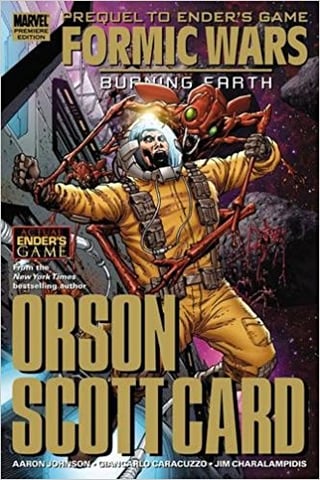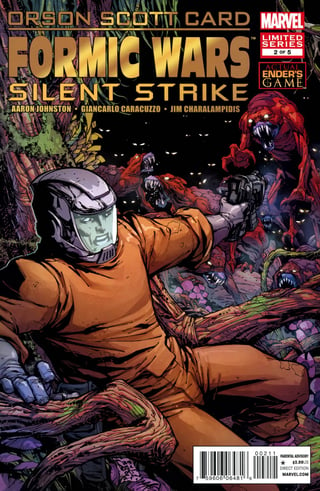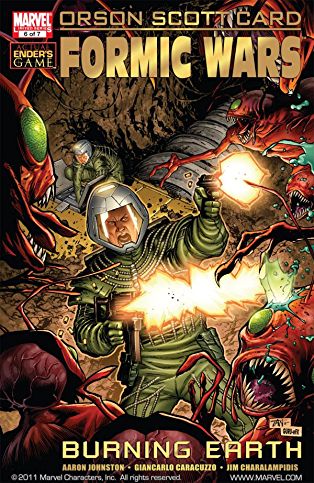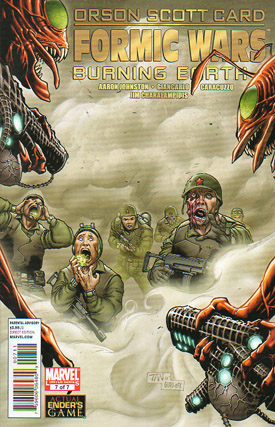In short: Battle School is a more effective, versatile, and multi-functional teaching tool.
Why not just have them play EVE Online or something that is already a computer simulation...
Command School is actually very close to what you're describing: it was indeed all about playing a simulated spaceship combat game to develop their grasp of tactics and coordination. Command School, however, had some flaws. It had to be near to the fleet communications systems, and for various reasons, that can lead to the revealing of secrets that the IF would rather keep (as we saw in the book). For this reason, Battle School has the dual purpose of training those who show promise while filtering out those who don't, to limit how many get close to the secrets.
A framework for teamwork
Battle School's structure is all about armies. This teaches those who can climb the ranks how to be a good commander; how to gain the respect and loyalty of those beneath you, how to be useful to those above you, and how to work within the structure of a ranked hierarchy. It also teaches those who can't climb the ranks how to get along in a military force; how to take orders, how to work as part of a unit, how to recognise when to improvise and when to seek further instruction.
Pressure brings out a person's nature
Battle School is very competitive. This sort of environment is good for spotting who gets bogged down in scoring points and building their ego, and who can stay focused on the bigger picture. It shows who can be ruthless and sacrifice others - or even their own success - when the objective demands it, and who is willing to sacrifice others purely for personal gain. These are very important things to know about someone you're putting in charge of military forces, and doubly so when the cost of failure is high and you won't get a second chance at it.
Standings and scores! Instead of fighting the battle at hand, those scores made soldiers and commander alike more cautious, less willing to experiment. That's why the ludicrous custom of fighting in formations had lasted so long - Ender can't have been the first commander to see a better way.
Ender's Shadow; Chapter Nineteen: Rebel
Battles as a microcosm
At the heart of Battle School is the battles themselves. These are fought in three dimensions with fixed points in amongst empty space, which mirrors how the war in space is fought. To succeed here requires a solid grasp of how things move in that environment, of how visibility works, of three-dimensional thinking. The lasers take longer to affect a target the further they are from you, which means you can see enemies some time before you can effectively engage them, which also mirrors real space fleet combat.
"Something most soldiers don't realize is that the farther away your target is, the longer you have to hold the beam, within about a two-centimeter circle. It's the difference between a tenth of a second and a half a second, but in battle that's a long time. A lot of soldiers think they missed when they were right on target, but they moved away too fast."
Ender's Game; Chapter 7: Salamander
Physical difficulty as a teaching tool
Physical combat also has a whole load of additional strains and pressures that you don't get from a computer game. To win, you need to be able to keep thinking all the complex things we've already mentioned, while also doing something complex with your body - moving about in null g, aiming a weapon, keeping an eye on your surroundings. This tests how well you can think while distracted, while tired, and while full of adrenaline - all of which prove to be very important. It also requires you to fully internalise the concepts; it's one thing to have an academic understanding of an object's trajectory in null g, but it's another thing entirely to grok it well enough that you can push off a wall, spin, shoot a moving target, and land where you intended, all while under fire and pressed for time. Do that, and you demonstrate that you understand zero-g motion far better than someone who can quote the equations of motion on demand. A similar argument covers other aspects, too - commanding over voice-only communications is very different to commanding a room full of people when you can see their facial expressions, and they can shout, posture, or even start a fight with you. Being physically present with your troops gives you access to way more information about how they're feeling, and raises the stakes for failure, so that those who succeed are only the very best.
Now, as we see in the book (and in Ender's Shadow, which I do recommend reading if you haven't already), the system isn't perfect, and some less than ideal candidates do seem to do quite well in it, but in general, that's the theory, and it works well enough.




